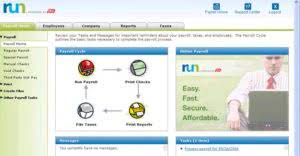
The information provided on the page is intended to provide general information. Each person should consult his or her own attorney, business advisor, or tax advisor with respect to matters referenced in this post. Accountor Inc. assumes no liability for actions taken in reliance upon the information contained herein. Moreover, the hyperlinks in this article may redirect to external websites not administered by Accountor Inc. The company cannot be held liable for the content of external websites or any damages caused by their use. Benefitting the well-being of employees is a task that should be among the highest priorities for an employer to improve psychological well-being, thereby improving workplace productivity.
That number increased to 15 days after five years, and 18 days after 10 years. Outstanding time off is time off that a worker has requested that their manager hasn’t approved. Someone might have several hours of outstanding PTO if their manager hasn’t approved their PTO requests. Calculate the total number of work hours in a year, depending on the # of weeks a business is operational. Now that you have the rules for employees accruing PTO, it’s time for them to request time off.
What are the Different Types of Paid Time Off?
Vacation accrual during leave or vacation accrual during layoff are examples of how an accrual of vacation days provides security and stability for compensation during difficult times. Part of the rights for employers, in particular, the value of vacation accrual Ontario rights fall under the Employment Standards Act. This means you are guaranteed as an employee paid time off, this varies depending on employment status (contract, part-time, full-time, length of employment) and by province. Here are a few different kinds of PTO that can factor into accrued vacation days and accrued pay. Accrued vacation pay is the amount of vacation pay that a company’s employees have earned, but the company has not yet paid. Buddy Punch is time tracking software that handles everything from your team’s schedule to payroll.
Let’s also assume that the company has only one full-time employee who began working at the company on January 1 of the current year and has an hourly pay rate of $26. In the current year, this employee will earn vacation pay of $3,120 (120 hours x $26), or $60 per week ($3,120 per year divided by 52 weeks). This means that in the current year the company must record vacation pay expense and a related liability at a rate of $60 per week. Paid time off (PTO), including vacation days, sick days, and holidays, is a popular employee benefit.
How to Calculate Accrued Vacation Pay
As a prior multiple-location business owner, Eric knows all about time collection, scheduling, and everything in-between. From best practices, stories, and business experience, he’ll keep you up to date on the latest trends. Ultimately, finding the best fit for your business needs depends on thorough research and exploring all available options. To ensure you comply with GAAP principles, it’s recommended to consult with a certified public accountant who is familiar with the specifications for your jurisdiction.

Without this step in place, you’re not going to get accurate accruals. Companies typically give their employees vacation days on a monthly basis. Daily leave time accrual could also be an option in companies with high turnover rates.
What is vacation accrual accounting?
Following are the best practices that will help the management in getting the PTO policy right in the first go. Based on a full-time 40-hour work week, an employee who receives 10 PTO days accrued vacation meaning per year will accrue 1.54 hours of PTO per week of employment. Based on this calculation, it will take about five to six months to accrue a full week (five days) of available PTO.
- Employees can also plan their leave utilization to take optimum advantage of the PTO bank system.
- US Federal Law does not require every company in the U.S. to offer PTO to employees.
- As the employee works, they get vacation time incrementally added to their PTO balance.
- Then, you can roll over or cash out the employee’s accrued time off.
- They can choose the accrual rates on an employee-by-employee basis, choose the accrual frequency for each employee, and the type of time off each employee accrues.
Popularity: unranked [?]
